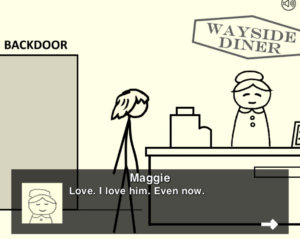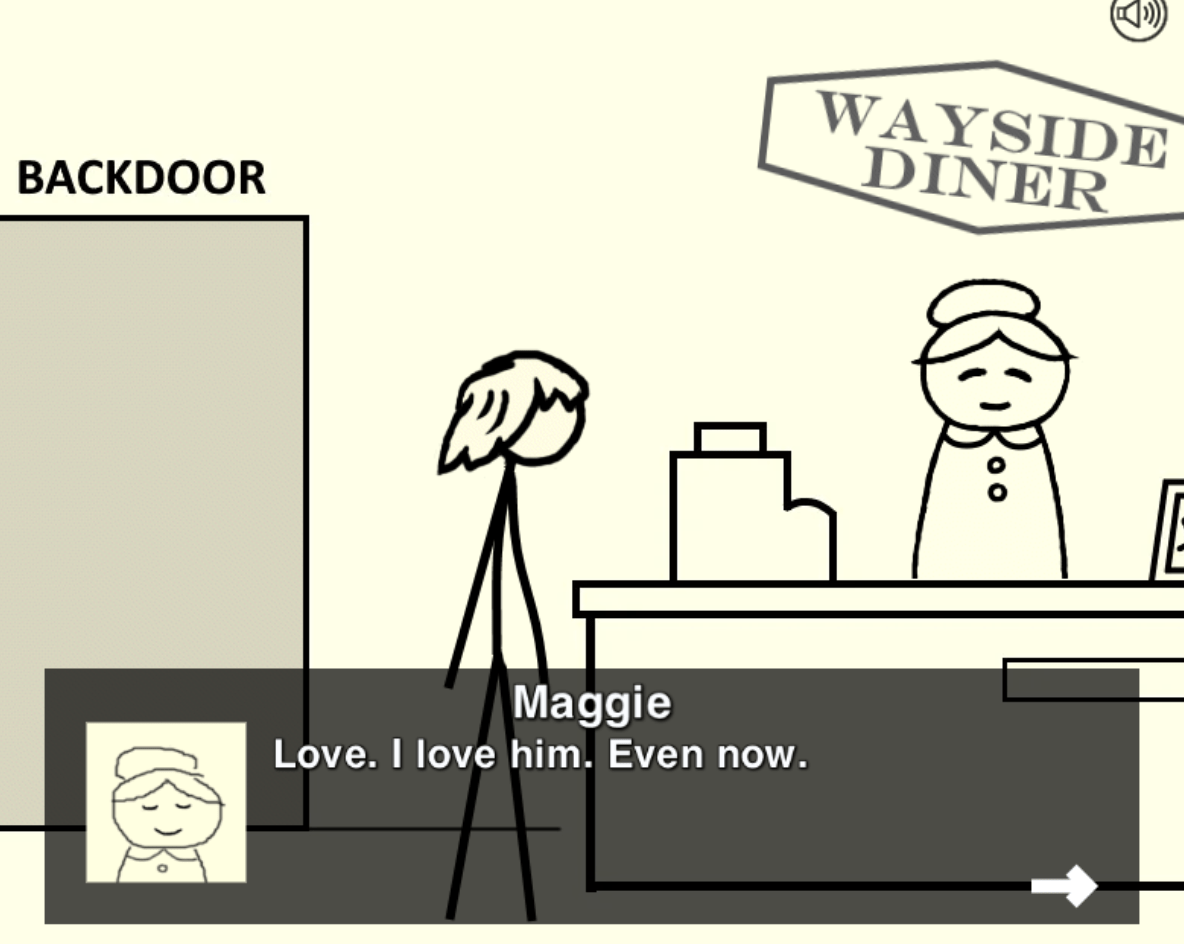Peter Ling
Mystery Critical Play
“Diner in the Storm” is a narrative based mystery game that targets young adults as well as older players. Created in January 2024 by independent creator Maxim Tsai, the game can be played on the web and is hosted on numerous different indie game website such as itch.io and crazygames.com. Through the game’s simple and easy to play mechanics, Diner in the Storm allows users to explore a narrative and make decisions to solve a mystery in its simplest form. And as simple as the game is, the player’s actions still hold major agency in determining how the story unfolds.
The game takes place in a diner during a storm where the player and the other characters are trapped. There is also uncertainty as to what has caused the storm and there is definitely a supernatural element to it. The player must do all he can to get to safety by talking to the other diner guests and putting the pieces together. The first thing that sticks out about Diner in the Storm is the graphics and illustration quality. All of the characters are depicted very simply and done in stick figure form, and the setting pieces are all made up of a collection of simple lines. Although this first struck me as unpolished and a bit underdone, I realized after playing that it actually added to the aesthetic at hand. Like the graphics, the game’s mechanics also initially felt oversimplified. The player is able to pan the camera and click on different people to engage them in conversation. However, what I shortly realized was how intentional I needed to be about each decision in order to move through the game successfully. I was able to see that the choices I made in conversations with other characters in the diners changed the way that I found information about the mystery and built trust with such people. The combination of all such decisions leads to any of the game’s five endings, leading to a number of different directions that the player can be led in. What separates this game from other mystery narrative games is this true simplicity that is prevalent without losing the aspect of exploration and task completion. Other games like “Everybody’s Gone to the Rapture” sometimes feel too loose and difficult to understand. However, Diner in the Storm presents a small learning curve that allows any player to jump straight into the game.
The games usage of story becomes increasingly more apparent as the game goes on, creating an embedded narrative that is layered with far more elements than what initially seems apparent. Players come to learn about the characters and their lives — a couple even needs relationship counseling that the player must facilitate in order to gain their trust. It also mixes in the mystery element with puzzles that help move the story forward, adding an ability to truly enact the story as the player. For instance, when the power goes out, a set of wires are presented to hook up the generator and restore electricity. As the game goes on, more and more of these sub challenges present themselves, all coming together to complete a story line in which the player truly gets to know the other characters and how they might be able to impact the game.
As little as I thought it was possible, I found myself becoming attached to the other characters in the game. The safety of these stick figures with minimal physical details became of the utmost importance to me and I tried to do everything I could in order to help them all. As aforementioned, the games strength lies in its simplicity, and the cohesive story that comes along with it helps make Diner in the Storm an easy to learn yet enjoyable and encapsulating mystery game.






